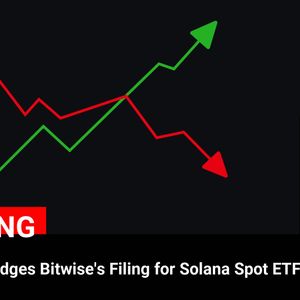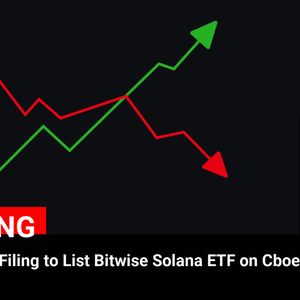Just when things seemed to be stabilizing in the crypto ETF world, a sudden shift has investors on edge. Recent data reveals a significant net outflow from U.S. Spot Bitcoin ETFs , painting a less rosy picture than anticipated. On February 10th, these investment vehicles collectively experienced a staggering $186.32 million in net outflows. Let’s dive into what happened, which ETFs were most affected, and what this could mean for the future of Bitcoin and the broader crypto market. Decoding the $186M Bitcoin ETF Outflows: What Happened on February 10th? According to data shared by crypto analyst Trader T (@thepfund) on X, February 10th was a day of considerable movement – but in the wrong direction – for several Bitcoin ETFs . While some ETFs held steady, or even saw inflows, the overwhelming trend was towards investors pulling their funds out. Here’s a breakdown of the key players and their respective net flows on that day: Fidelity’s FBTC: Leading the outflow pack with a substantial $136.09 million net outflow. Grayscale’s GBTC: Continuing its outflow trend, GBTC saw $46.26 million exit. Invesco’s BTCO: Recorded a net outflow of $34.03 million. Franklin Templeton’s EZBC: Experienced a $19.75 million net outflow. VanEck’s HODL: Saw a smaller, but still significant, $5.51 million net outflow. Interestingly, amidst this sea of red, there was a single beacon of green: BlackRock’s IBIT: Bucking the trend, IBIT attracted a net inflow of $55.32 million. All other Bitcoin ETFs reported negligible or no changes in their holdings on February 10th. This stark contrast between outflows and isolated inflows raises some crucial questions. Why the Sudden Surge in ETF Outflows? Examining the Factors Several factors could be contributing to these ETF outflows . It’s important to remember that the ETF market is still relatively new, and fluctuations are expected. However, significant outflows like these warrant a closer look. Here are some potential reasons: Profit Taking: After the initial hype and price surge following the approval of Spot Bitcoin ETFs , some investors might be taking profits off the table. This is a common market behavior, especially after periods of rapid growth. Market Volatility: The cryptocurrency market is known for its volatility. Uncertainty in the broader market or negative price movements in Bitcoin itself can trigger investors to reduce their exposure, leading to ETF outflows. Grayscale GBTC Dynamics: GBTC’s unique structure and higher fees compared to newer ETFs have consistently contributed to outflows. Investors might be rotating out of GBTC into lower-fee options or simply reducing their overall GBTC holdings. The ongoing outflows from Grayscale GBTC significantly contribute to the overall negative net flow figure. Rotation to IBIT: The inflow into BlackRock’s IBIT while others are experiencing outflows could indicate a rotation within the ETF market. Investors might be consolidating their holdings into ETFs from larger, more established asset managers like BlackRock, perceived as lower risk or offering better liquidity. Macroeconomic Factors: Broader economic conditions, interest rate expectations, and inflation concerns can influence investor sentiment towards risk assets like Bitcoin and, consequently, Bitcoin ETFs . IBIT’s Inflow: A Sign of Strength or an Exception? The $55.32 million inflow into BlackRock’s IBIT is a noteworthy counterpoint to the overall outflow trend. Is this a sign of underlying strength for certain Bitcoin ETFs , or simply an anomaly? It could be interpreted in a few ways: Investor Preference for BlackRock: BlackRock’s brand reputation and massive asset management scale could be attracting investors seeking stability and trust in the nascent Spot Bitcoin ETFs market. Strategic Allocation: Institutional investors might be strategically allocating capital to IBIT as part of a broader portfolio strategy, even amidst general market outflows from other ETFs. Fee Advantage: IBIT’s competitive fee structure compared to some other ETFs, particularly GBTC, might be a factor attracting inflows. However, it’s crucial to remember that a single day’s inflow, while positive, doesn’t negate the overall net outflow trend across the majority of Bitcoin ETFs on February 10th. More data over the coming days and weeks will be needed to determine if IBIT’s inflow is a sustainable trend or an isolated event. What Do Bitcoin ETF Outflows Mean for the Market? Actionable Insights So, what are the key takeaways from these Bitcoin ETF outflows , and what should investors be watching for? Short-Term Volatility: Significant outflows can contribute to short-term price volatility in Bitcoin. Large sell orders from ETFs can exert downward pressure on the market. Market Sentiment Check: ETF flows are a valuable indicator of market sentiment. Sustained outflows could suggest a cooling off in investor enthusiasm for Bitcoin, at least in the short term. GBTC Monitoring is Key: Keep a close eye on Grayscale GBTC outflows. As the largest Bitcoin ETF, its flows have a significant impact on the overall ETF market dynamics. Continued high outflows from GBTC could be a drag on overall net flows. IBIT’s Performance as a Benchmark: Watch IBIT’s flows as a potential benchmark for investor preference within the Spot Bitcoin ETFs space. Its continued inflows, if sustained, could signal a shift in market leadership within the ETF category. Long-Term Perspective: It’s essential to maintain a long-term perspective. One day of net outflows doesn’t necessarily negate the overall positive narrative surrounding Bitcoin ETFs and their potential for broader crypto adoption. The ETF market is still maturing, and fluctuations are part of the process. The Road Ahead for Bitcoin ETFs: Navigating the Flows The recent $186.32 million net outflow from U.S. Spot Bitcoin ETFs serves as a reminder that the crypto ETF market is dynamic and subject to shifts in investor sentiment and market conditions. While the outflows are notable, the inflow into BlackRock’s IBIT and the complex factors at play suggest a nuanced picture rather than a straightforward bearish signal. Investors should closely monitor ETF flows, alongside broader market trends, to gain a comprehensive understanding of the evolving landscape and make informed decisions. To learn more about the latest crypto market trends, explore our article on key developments shaping Bitcoin price action.




















